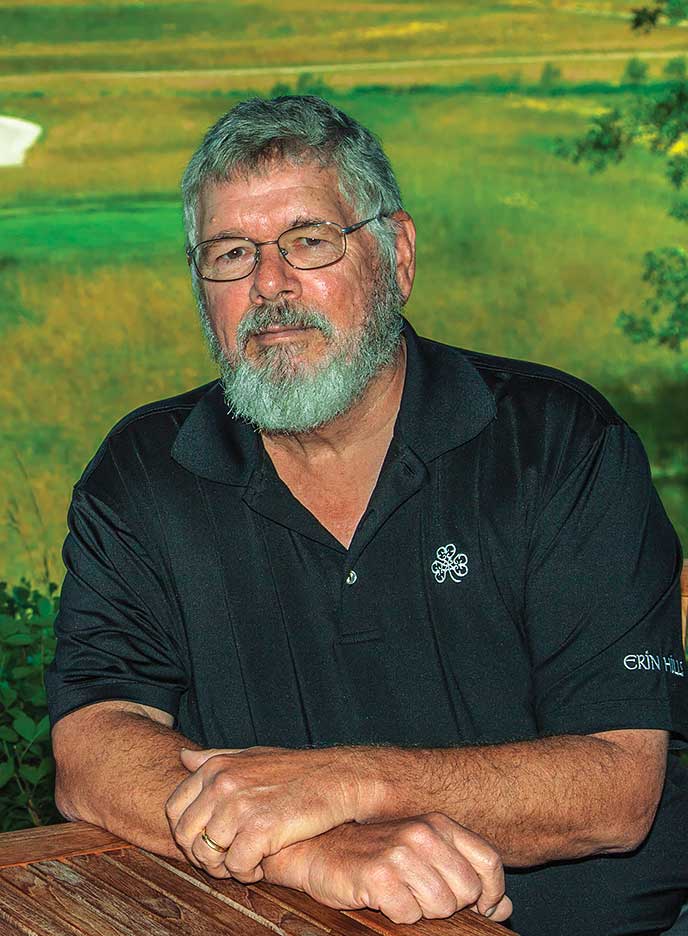JF: When a Golf Digest rankings panelist goes to review a golf course for the magazine’s rankings lists, how much do they factor in the conditioning of the golf course?
RW: Golf Digest panelists evaluate every course in eight different categories, one of which is conditioning. The other categories are shot options, challenge, design variety, distinctiveness, aesthetics, character, and fun. So the panelists examine conditioning as we define it on every course they play and evaluate for Golf Digest.
JF: How does Golf Digest define conditioning?
RW: Conditioning is evaluated like this: How firm, fast, and rolling were the fairways, how firm yet receptive were the greens, and how true were the rolls of putts on the day you played the course.
JF: How do you educate raters about soils, turfgrasses, and drainage?
RW: We don’t.
JF: Why not? Should they have at least a basic working knowledge of various playing surfaces?
RW: Not necessarily;y. We are asking for their obserbvations n a physical characteristics of the gress they ar eplaying on that day. It really doesn matter if its bent grass fairway or a zoysia fairwat or a bernmuda fairway or a ryegrass fairway. The point is if the fairway is fast firm and rolling it deservews a good score.
JF: How do GD panelists factor in conditioning in their evaluations? Is it 1/8th?
RW: Our present formula uses seven of the eight categories I listed above. The “fun” category is newly added, so we have not scored enough courses in that category to use it accurately yet.
It’s a 1.0 to 9.9 scale, in each of the eight categories; there is no perfect 10; no course is absolutely perfect, and there are no zeroes either. Then we average up the scores in each category. We count the shot options category twice, and the other six categories once, so yes, it turns out that conditioning counts for 1/8th.
JF: So everything is equal, except shot options counts for double?
RW: Yes. So remember that our scale maxes out at 80 points, (well 79.2 to be exact…9.9 is the highest score for any category), it’s not a 100 point scale.

JF: So any score in the 70s is exceptional, even world class?
RW: Yes.
JF: What are the simplest, most inexpensive ways superintendents and greens committees can improve the conditioning of their golf course right now?
RW: Drainage, drainage, drainage! I have gone around for 20-some odd years speaking to boards of directors and greens committees of courses on the 100 Greatest list or aspiring to be on the 100 Greatest list, I’ve talked to superintendents organizations, state golf associations, and all kinds of other groups interested in the course ranking process. And I tell them: Don’t be spending money trying to win a Golf Digest ranking. Don’t plant flower beds to get your “aesthetics” numbers up. Don’t spend hundreds of thousands of dollars rebunkering your course to raise its “challenge” score. What they should spend the money on is what will benefit their membership, not Golf Digest panelists.
Instead, because our conditioning category revolves basically around water use, I tell clubs the one area where they could improve their numbers is in adding more drainage, and upgrading their irrigation. And mind you: I’ve had boards of directors ask me “can we point to your conditioning definition as a selling point to upgrade our irrigation, and my response is,
“If that helps you sell it, we have no objection, because every club should upgrade their irrigation to use less water.”
Our conditioning category is intended to be social legislation. We are deliberately trying to get clubs to use less water. We actually changed the definition of “conditioning” in our ratings system at the request of Alice and Pete Dye, who were representatives of the ASGCA at the time. The ASGCA wanted Golf Digest to include an environmental factor in the way it evaluates golf courses. So I asked Alice and Pete “What environmental factor is the most important one to be evaluated?” and Alice responded “water use.” And as Pete reminded me, in the future, water is going to become more and more precious, valuable, and must be conserved. Proper water use is our goal, and the definition gives our panelists a way to measure it without being agronomists.
JF: It seems important that head superintendents be well-versed in golf course architecture as well as turfgrass, soils, and drainage.
RW: They don’t need to be experts in all golf course architecture in general, but they should be well-versed in the architecture of their course and its architect.
JF: What are you hearing from around the country about the impact of Covid-19 on rounds at public courses? At private courses? Is there any disparate impact between equity and non-equity clubs? [Author’s Note: In June, the National Golf Foundation reported that rounds were up 8% nationally.]
RW: Rounds at public courses are up. And the reports I’m getting from private courses are that they are busier then they have been in years. I have no idea about the distinction between equity and non-equity clubs.
JF: Here’s a question from our readers: How many supers are on the GD rankings panel? And how can interested supers get on the panel?
RW: I don’t know what the actual count is, but it’s about 50 supers, (the panel has 1,800 people). That’s just an estimate. You have to be a 5.0 handicap or less to even be invited. Moreover, we expect people to travel a lot during the year and play a lot of golf. Now superintendents work exceptionally hard every single day. The few supers that we have on the panel have the luxury of being able to take the time to travel and travel at their own expense. Also, now there is a fee to be on the panel: a $1,500 initiation fee and $300 annual dues. Anyone of your readers interested can contact me at rwittengd@att.net or whitten@golfdigest.com.
When not reporting live from major sports championships or researching golf courses for design, value, and excitement, multiple award-winning sportswriter Jay Flemma is an entertainment, Internet, trademark, and banking lawyer from New York. His clients have been nominated for Grammy and Emmy awards, won a Sundance Film Festival Best Director award, performed on stage and screen, and designed pop art for museums and collectors. Twitter @JayGolfUSA



























